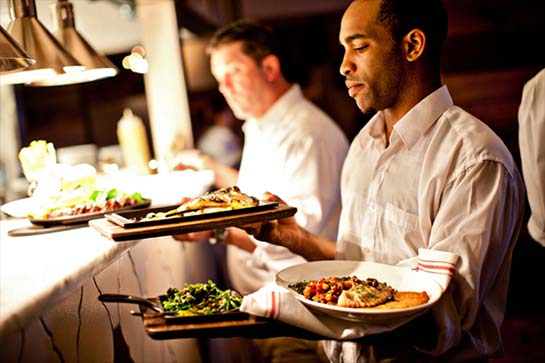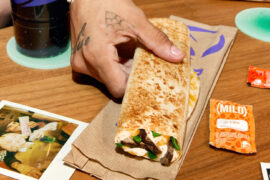Chain restaurant operators and observers in the United States are anxiously searching for clues into the steady decline in comparable sales and traffic. Despite generally positive economic news, results for July show a continued downward slide that began after a strong start in 2015.
According to Black Box Intelligence, a Dallas, Texas-based market research organization monitoring nearly 25,000 restaurant units representing $64 billion in sales, restaurant comp sales declined 1.4 percent last month and comp traffic fell 3.9 percent. July represents the weakest performance for both metrics since December 2013.
The downward trend in sales has been gradual and consistent. Since January of 2015, comp sales have slipped an average of .25 percent per month. Soft July results might have been anticipated given the difficult rollover comparisons to a relatively strong 2015. And 4th of July holiday sales (which were included in June results last year) did create some headwind. Nonetheless, the sales environment is complex and there is little consensus that it’s reached the bottom.

Segment performance is uneven. Casual dining still mirrors the industry, but consistently trails by about 0.7 percentage points. Fast casual’s decline has been more modest. However, in July, fast casual sales dropped -2.3 percent, the first time it has lagged the industry since January 2015. Also of interest, higher ticket segments such as upscale casual and fine dining underperformed the industry in July, falling -1.6 and -5.8 percentage points, respectively.
QRS Sales Positively Consistent
Quick service (QSR) is still the one segment with consistently positive figures. QSR’s sales trend is hovering around 2.0 percent in 2016 and exceeds the industry by roughly 2.5 percentage points. It was the only segment up in sales in July (1.3 percent).
The performance malaise cuts across most geographic regions. Texas and the Southwest have experienced the deepest declines in sales and traffic. Though results aren’t as strong as 2015, California is consistently the best-performing region. It has only experienced one month of negative comp sales in the past two years.
Operators are perplexed by the apparent disconnect between macroeconomic indicators and results. Restaurant sales typically reflect changes in disposable income and unemployment. But consumer spending, confidence, GDP growth, income growth and unemployment all point to a modestly stronger economy. Even the rising stock market contributes to the “wealth effect.” Yet as an industry, chain restaurants don’t seem to be sharing in the upside.
Generally Positive Outlook
Joel Naroff, president of Naroff Economic Advisors and an economist with TDn2K, the parent company of Black Box Intelligence, offering an intermediate outlook that is generally positive, commented:
“The US economy continues to wander along its modest to moderate growth pace. There is a great divide between business and household spending. Consumer demand was strong in the second quarter, driven by decent job and wage gains. However, business investment was down sharply, in part because of inventory adjustments. As that dissipates, investment should improve. The outlook is for GDP growth to be in the 2.5 percent range for the second half of the year. That should create solid income gains as the labor market tightens further.
“As for restaurant sales, there is now a more even distribution of consumer spending between durables, nondurables and services. This rotation in demand was one factor in the deceleration of restaurant spending growth. As this process slows, so should the restaurant sales growth decline.”
The uphill battle for sales traction among chains is also somewhat at odds with government data showing overall growth from food and drinking establishments. Government data doesn’t focus on specific restaurant segments, but one implication is that chains are losing the battle at a local level with independents and/or other food-away-from-home or take-out and delivery services. There is growing evidence that these options are taking share from legacy restaurant brands. If these scenarios play out, it could mean a meaningful shift in the chain restaurant “share of stomach.”
Nagging Labor Problem
No analysis of restaurant performance is complete without a view of the labor market. In short, the difficulty operators face attracting and retaining talent cannot be overstated. With unemployment low, finding qualified employees to staff and manage restaurants is a huge focus of operators.
Data from TDn2K’s People Report™ shows continued growth in restaurant jobs, but also points to hourly turnover figures that are higher than at any point since the Great Recession. Management turnover is greater than 30 percent in every segment. Employees have multiple options in today’s environment and wage pressures (from minimum wage and tight supply) make it very difficult to get and retain employees.
TDn2K’s analysis has long documented the linkage between turnover, compensation and operating results. Based on this, there is little question that recent restaurant performance is at least in part attributable to issues of staffing, training and execution.





